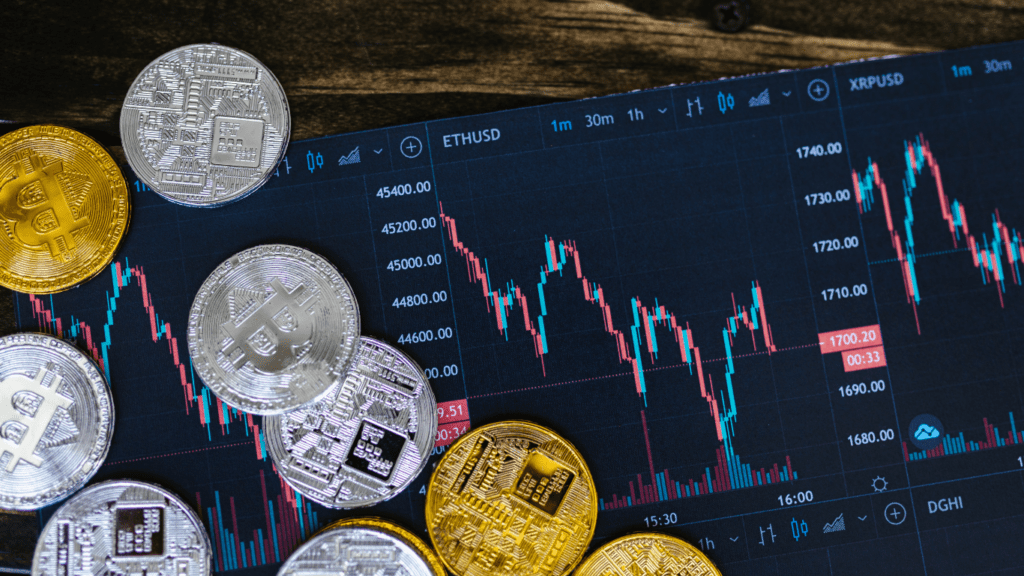Understanding Cryptocurrency Momentum
Cryptocurrency momentum refers to the speed and strength of price movements in digital currencies over time. This concept involves analyzing past performance to gauge likely future trends. In a volatile market like crypto, identifying momentum helps investors make informed decisions. Observing price action across various timeframes reveals these patterns.
Traders often use technical analysis to assess momentum indicators. Tools like Moving Average Convergence Divergence (MACD) and Relative Strength Index (RSI) provide insights into price changes. For instance, MACD highlights trend direction and duration, and RSI measures overbought or oversold conditions. These indicators enable more accurate timing for entries and exits.
Market sentiment is another key factor affecting momentum. Positive news, like regulatory approvals and technological innovations, can cause bullish shifts. Conversely, negative developments, such as security breaches, may lead to bearish trends. Monitoring social media and news sources regularly captures sentiment changes.
On-chain metrics offer additional insights into momentum shifts. Analyzing transaction volumes, active addresses, and network health indicates underlying asset strength. High transaction volumes often precede price increases, suggesting rising investor interest. Understanding these metrics enhances prediction accuracy and strategic planning in crypto markets.
Key Indicators of Momentum in Cryptocurrency

Key indicators provide insights into the speed and direction of price movements in the crypto market. Recognizing these indicators helps traders adjust their strategies accordingly.
Trading Volume and Market Sentiment
Trading volume measures how much of a cryptocurrency is traded over a specific period. High trading volume indicates strong momentum, as it shows increased investor interest. When volumes surge, it often signifies that a significant price movement is underway. Understanding market sentiment complements this analysis. Positive sentiment, driven by news or technological advancements, encourages buying, while negative sentiment leads to selling. By monitoring social media platforms and news outlets, I can gauge prevailing market feelings, helping me time my trades more effectively.
Moving Averages and Technical Patterns
Moving averages smooth out price fluctuations, highlighting the prevailing trend over a set period. The 50-day and 200-day moving averages are commonly used; a crossover point, where a short-term moving average crosses a long-term one, often signals momentum shifts. For example, when the 50-day average crosses above the 200-day average, it indicates bullish momentum. Technical patterns, such as head and shoulders or double tops, assist in predicting future directions. By combining these patterns with moving averages, I can better anticipate market changes, enhancing my trading decisions.
Strategies for Tracking Cryptocurrency Momentum
Effective strategies enhance the ability to track momentum in cryptocurrency markets. A mix of technical and fundamental approaches offers a comprehensive view of potential movements.
Utilizing Momentum Indicators
Momentum indicators are essential tools for assessing the strength and direction of trends in cryptocurrency. I often use the Moving Average Convergence Divergence (MACD) and Relative Strength Index (RSI) for this purpose. MACD identifies potential buy/sell signals by comparing moving averages, while RSI measures the speed of price changes to detect overbought or oversold conditions. These indicators offer insights into timing my trades, helping to maximize gains or minimize losses.
Examining trading volume also provides valuable insights. High volumes often confirm momentum strength, indicating that investor interest aligns with the current trend direction. By monitoring these indicators together, I gauge the ongoing momentum’s reliability and adjust my strategies accordingly.
Incorporating Fundamental Analysis
Fundamental analysis complements technical tools by evaluating intrinsic factors affecting cryptocurrency prices. I consider news related to technological advances, regulatory changes, or major partnerships which can significantly influence market trends. For instance, updates on blockchain scalability may impact momentum by attracting or deterring investors.
On-chain metrics like transaction volumes and active addresses serve as additional data points. These metrics reveal the level of network activity and investor engagement, offering clues about the underlying momentum. By integrating these fundamental factors with technical indicators, I achieve a more balanced perspective, allowing for informed investment decisions in the dynamic crypto market.
Tools and Platforms for Monitoring Momentum
In the fast-paced cryptocurrency market, leveraging the right tools is key to effectively tracking momentum. By using various analysis tools, I can gain insights into price movements and project future trends.
Popular Cryptocurrency Analysis Tools
Several tools stand out for analyzing momentum in cryptocurrency markets:
- TradingView: This platform offers a wide array of charting tools and indicators like MACD and RSI. It allows me to customize my charts to track specific momentum patterns.
- CoinMarketCap: Known for providing comprehensive market data, CoinMarketCap tracks trading volumes, price changes, and on-chain metrics. I use it to gauge overall market sentiment and momentum.
- CryptoCompare: Featuring extensive data on different cryptocurrencies, CryptoCompare offers historical performance analysis and volume metrics. This helps in identifying shifts in market momentum.
- Santiment: This platform provides social and on-chain data analysis, aiding in the assessment of investor sentiment and engagement levels, which influence momentum.
Integration with Trading Platforms
Integration with trading platforms enhances the efficiency of monitoring momentum:
- Binance: By linking analysis tools like TradingView with Binance, I can execute trades based on identified momentum patterns swiftly and efficiently.
- Coinbase Pro: This platform offers real-time data and supports integration with analytical tools, allowing me to make informed trading decisions by analyzing live momentum changes.
- Kraken: Known for its robust API, Kraken permits seamless integration with technical analysis tools, letting me track detailed momentum indicators directly on the trading interface.
By using these tools and integrating them with trading platforms, I can navigate the cryptocurrency market more effectively and make informed investment decisions based on momentum analysis.
Risks and Challenges of Momentum Trading in Cryptocurrency
Momentum trading in cryptocurrency comes with inherent risks and challenges. Understanding these aspects is crucial for any trader aiming to succeed in this volatile market.
Market Volatility and Uncertainty
Cryptocurrency markets are known for their extreme volatility. Price swings can occur rapidly, impacting momentum trades negatively. In highly volatile markets, traders may find it difficult to time entries and exits accurately, which increases the risk of losses. For example, sudden shifts caused by significant news or events can disrupt established trends, making forecasting challenging.
Regulatory and Security Concerns
Cryptocurrency trading environments often face regulatory and security issues. Regulatory changes can influence market stability, and traders must stay informed about potential legal impacts on their trades. In addition, the decentralized nature of cryptocurrencies poses security risks, such as exchange hacks or fraudulent activities, which can compromise funds. Being vigilant about these concerns is necessary for momentum traders to safeguard their investments.
 Kimm Centenolla, the visionary behind Funds Fortune Roll, has dedicated their career to empowering individuals with the knowledge and tools needed for financial success. With a passion for economics and wealth-building strategies, Centenolla established the platform to bridge the gap between complex financial concepts and practical application. Their commitment to providing accessible insights and actionable advice has made Funds Fortune Roll a trusted resource for investors of all levels, helping them navigate the ever-changing financial landscape with confidence.
Kimm Centenolla, the visionary behind Funds Fortune Roll, has dedicated their career to empowering individuals with the knowledge and tools needed for financial success. With a passion for economics and wealth-building strategies, Centenolla established the platform to bridge the gap between complex financial concepts and practical application. Their commitment to providing accessible insights and actionable advice has made Funds Fortune Roll a trusted resource for investors of all levels, helping them navigate the ever-changing financial landscape with confidence.